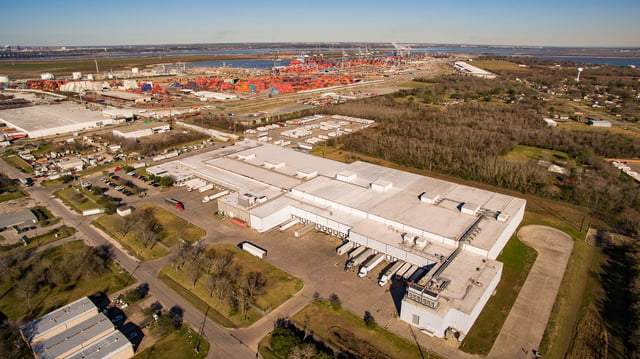As the poultry industry continues to diversify – from the consumer shift towards ready meals and meal kits, and exports to emerging global markets - the demand for blast-freeze capabilities and to store poultry is on the rise. The Farmers’ Organization Authority (FOA) projects the global demand for poultry to grow 24-percent in the next 10 years, so the proper poultry cold-chain infrastructure at home is a priority.
So maybe your attention starts to focus on finding the most effective blast-freezing and storage location for your product, which begs the question: where is the best location for your cold-storage partner to have a facility – near your processing farm or by the port?
Some argue that asking for opinions on which option is better is like asking: “What came first, the chicken or the egg?”
Let’s explore three main factors to consider when searching for the perfect location that will enable you to satisfy the growing global appetite for poultry.
1) Proximity
Close to the processor: This allows processors to move product directly into the cold-storage facility and have it blast-frozen sooner. It's then stored until time to export. Inspections can take place on-site and product can either be loaded directly into shipping containers or trucked to a cross-dock
facility at the port before being drayed to the terminal and exported.
Close to the port: Utilizing short-term storage and container stuffing services at a facility close to the port will mean your product is staged and ready to go.

Americold has several sites in Arkansas, such as this one in Russelville. Blast freezing services and location, location, location!
Things to consider: While the product can be positioned closer to the port for export, timelines are often rushed as there’s only a small window to transport fresh poultry to the coldstorage facility, have it blast-frozen, inspected, and loaded into containers in-time for departure.
Many companies will have specific policies around this process which will limit options. Port locations typically turn product very quickly, and storage space may therefore be at a premium,
and priced accordingly. Product recalls may happen, and it will be more costly to have product
returned from a port-side location than product situated close to your processing facility.
2) Quality
Close to the processor: Product can be frozen immediately, with unprecedented certainty that product integrity is maintained.
Close to the port: As most cold storage facilities predominately accept fresh poultry from processors, this can be a challenge when the cold storage facility is located by the port. Many
companies have specific guidelines, for example, poultry must be frozen within 72 hours and at a facility within 100 miles. Fresh product will also seep liquids for longer periods, requiring additional cleanup costs.

Americold's Gainesville, GA facility is right in the heart of the US south east's poultry raising region
Things to consider: The risk of contamination only increases the longer poultry remains unfrozen.
Which means the potential for more bacteria and the greater the risk consumers could become sick. As frozen temperatures prevent most bacteria from multiplying, the faster poultry is frozen, the better.
3) Blast Capacity
Close to the processor: Cold storage facilities are tight on blast capacity.

Americold's LaPorte, TX facility offers blast-freezing and frozen storage,
and is located right at the Port of Houston for direct access to the terminals
Close to the port: Cold storage facilities are tight on blast capacity.
Things to consider: You read that right – whether it’s by the processor or port, cold storage facilities are tight on blast capacity due to increasing demand. With both sides of the coin having the same blast-capacity odds, it’s important to remember that the sooner you have your product blast
frozen, the better.
The perfect location for your product will depend on your tolerances of some of the points we’ve discussed here. It is imperative, though, regardless of location, that we build the cold-storage supply chain network you need. A seaside view is optional!
Subscribe for Updates
Receive the latest news from Americold
